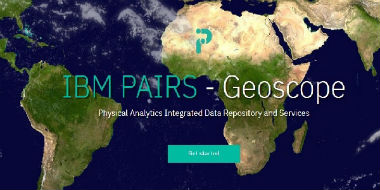Cloud Computing
How to Design Hybrid Clouds for Innovation, Efficiency and Growth
September 1, 2016 | Written by: Adam Cutler
Categorized: Cloud Computing | Hybrid Cloud
Share this post:
Cloud computing has evolved from a technological innovation to an integral part of business.
Organizations are increasingly turning to cloud, and for many, a hybrid cloud is the best choice because it’s a blend of public cloud, private cloud and traditional information technology (IT) platforms. Business conditions and requirements define the best type of hybrid cloud for each organization.
In our new IBM Institute for Business Value (IBV) study, “Tailoring Hybrid Cloud: Designing the Right Mix for Innovation, Efficiency and Growth,” released today, 78 percent of senior leaders said have a plan for adopting cloud computing, more than double the number from a similar IBV study in 2012.
In the new study, executives said they achieved the strongest results by integrating cloud initiatives across their organizations and by tapping external resources for access to reliable skills and greater efficiency.
Finding the right cloud technology begins with deciding what to move to the cloud and addressing the challenges affecting the migration, particularly as we enter the era of cognitive computing.
Organizations that want to use cloud as part of a strategic transformation should decide which business and IT functions to deliver through the cloud, identify and address the challenges anticipated in adopting the cloud, and take advantage of the operational, financial and innovation benefits that cloud offers.
Among its findings, the study said there are three things to consider when moving business and IT functions to the cloud:
1) Security and compliance requirements: New solutions are being developed rapidly. Many cloud vendors provide comprehensive metrics and consumption activities, as well as tracking and monitoring capabilities. A company’s consumption pattern reports can often be used for audits as evidence of compliance.
2) Timing and speed to market: The cloud enables organizations to quickly provision resources needed for rapid development of new products and services. Companies can also assemble tailor-made, customized solutions with cloud-based components. This greatly reduces development time and enhances the agility of organizations to respond to constantly shifting marketing demands.
3) Estimated return on investment (ROI): The executives surveyed by the IBV this year said they realized significant financial benefits through accelerating ROI and lower IT infrastructure costs, which is a major expense item for most organizations. Fifty-seven percent of executives from high-performing organizations identified cost as the most important criterion in deciding which workloads should be moved to the cloud.
Hybrid cloud can help to improve an organization’s operations by means of greater agility and speed, more effective reallocation of internal resources and better linkage between business and IT departments. Successful companies are delivering business value through hybrid cloud in three key areas: operations, finance and innovation.
When asked about the outcomes of their most successful cloud initiatives, more than three-quarters of those surveyed, or 76 percent, said the ability to expand into new industries. Close behind were the 71 percent of executives who said they’d been able to create new revenue sources and new business models.
Our study also found that innovation advantages can be gained through rapid experimentation, development of strategic application programming interfaces (APIs) and extended access to external talent and technologies. By conducting rapid experimentation, innovative organizations can test and even fail — quickly.
The data that is uncovered by use of APIs is another way that cloud supports innovation and helps to cultivate new opportunities.
Taking advantage of a hybrid cloud extends access to external talent and technologies. One respondent noted that today, a company doesn’t want to be defined by the number of engineers it employs. Instead a company can rely on partners to provide skills and information about recent industry trends, methodologies and frameworks, while it works directly with its core business.
________________________
Follow Justin Chua on twitter @justinchua.

Distinguished Designer, AI and Cognitive Enterprise, IBM
It’s a Long and Open Road Ahead for Bus & Coach Travel
As one of the oldest forms of public transport, the bus occupies a special place in our hearts and lives. For more than a century, these vehicles have carried us to work, school, holiday destinations and festivals. But bus and coach companies can hardly afford to be sentimental nowadays. Technological innovations are creating new models […]
How IBM PAIRS Helps Agribusiness Generate Better Forecasts, Yields
On February 6, IBM announced it would make IBM PAIRS Geoscope – the company’s AI-enabled cloud technology built for geospatial-temporal data – widely available, offering it to data scientists and software developers in industries as diverse as agriculture, finance, retail, energy, and government. IBM had previously made PAIRS (Physical Analytics Integrated Data Repository & Services) […]
Refining the Expanding Role of Hybrid Cloud
Successful enterprises innovate. They listen, learn and experiment, and after doing so, they either lead or adapt. Or, for those who do not, they risk failure. Possibly nowhere is this more evident than in cloud computing, an environment driven by user demand and innovation. Today the innovation focuses squarely on accelerating the creation and deployment […]


